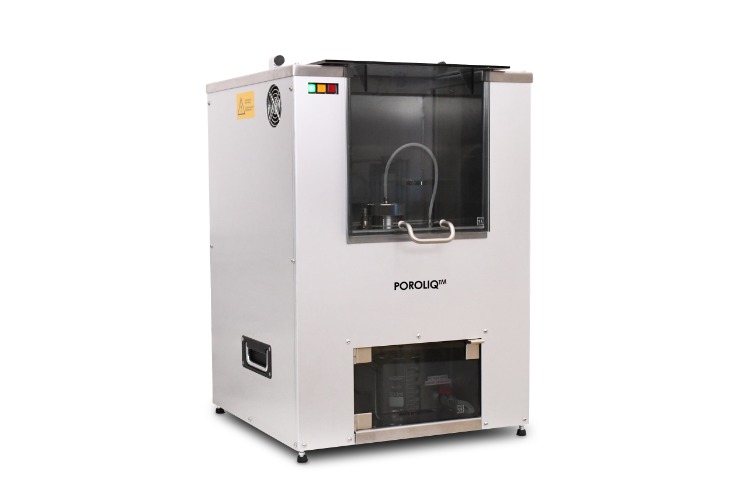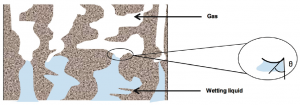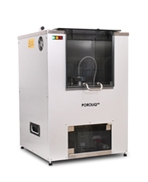|
2022년 12월 부로 Porometer사 장비 모델명이 아래와 같이 변경되었으니 참고 부탁드립니다.
변경 전 변경 후
POROLUX™ 50 POROLUX™ BP
POROLUX™ 100 POROLUX™ Cito L
POROLUX™ 200 POROLUX™ Cito M
POROLUX™ 500 POROLUX™ Cito
POROLUX™ 1000 POROLUX™ Revo
POROLIQ™ 1000 AQ POROLIQ™ AQ
POROLIQ™ 1000 ML POROLIQ™ ML

POROLIQ™ 1000
The POROLIQ™ 1000 is a Liquid Liquid Porometer (LLP). This rapid, precise method employed by the POROLIQ™ 1000 allows for testing of pore size down to 2nm and, compared to other techniques, uses lower pressures for characterisation of traditional micro-, nano-porous materials.

HOW DOES THE POROLIQ™ 1000 WORK?
It is the first LLP equipment based on a pressure driven concept, which guarantees the maximum accuracy, especially when measuring pore sizes in the submicron range.
A measurement consists first of complete saturation of the porous membrane with a wetting liquid. The subsequent displacement of the wetting liquid from the pores is achieved by a second, immiscible liquid (displacement liquid). The pressure (P) required to expel the wetting liquid out of the pore depends on its diameter (D) as expressed by the Young-Laplace equation P=4*γ*cos θ/D , where γ is the interfacial tension betwen the wetting and displacement liquid. Typical interfacial tension values lie between 0.35 and 4 mN/m. This allows pores as small as 2 nm to be probed or, in comparison to traditional gas liquid porometry, for the use of more moderate pressures to test traditional submicron pore size ranges.
By measuring the flow rate of liquid thorugh the sample, a complete pore size distribution can be obtained.

THE MOST ACCURATE LLP ON THE MARKET
•Based on the pressure step/stability method: a data point is only recorded when the user-defined stability algorithms are met for both pressure and flow.
•Detects the opening of a pore at a certain pressure and waits until all pores of the same diameter are completely opened before accepting a data point.
•The POROLIQ™ 1000AQ uses a combination of three ultrasensitive liquid flow sensors to measure exactly and accurately flow rates from 0.16 μl/min (to detect the displacement of wetting liquid out of the pores from the very beginning).
•Ideal for full characterization of hollow fibers at low pressures.
PARAMETERS MEASURED
•First Flow Point (FFP) size,flow and pressure
•Pore size flow distribution
•Mean Flow Pore (MFP) size and pressure
•Total pore number
•Smallest Pore Size (SP) pressure and number
•Total pore area (% and μm²)
•Mean Pore Diameter (MPD) and pressure
•Liquid permeability
•Cumulative flow distribution
|










